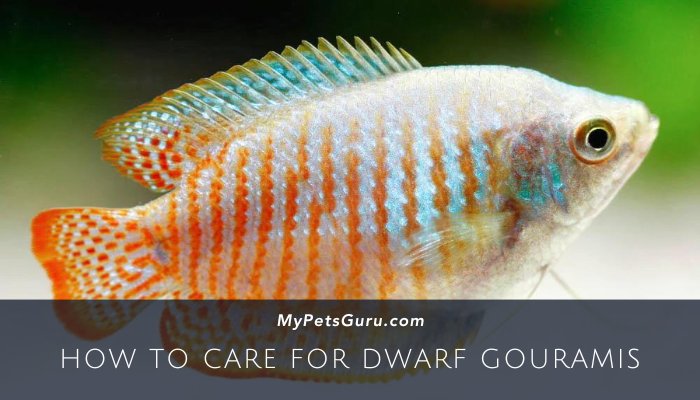- Dwarf gouramis are small and colorful freshwater fish that make great additions to aquariums.
- On average, dwarf gouramis reach a size of 2 to 3 inches in length.
- Male dwarf gouramis tend to be larger and more vibrant in color than females.
- Providing a suitable environment, proper nutrition, and regular care can help dwarf gouramis reach their maximum potential size.
Are you considering adding a dwarf gourami to your freshwater aquarium? These charming little fish are known for their vibrant colors and peaceful nature, making them a popular choice among hobbyists. However, you might be wondering, how big can dwarf gouramis actually get? In this article, we’ll explore the typical size of dwarf gouramis and what factors can influence their growth.
The Average Size of Dwarf Gouramis
Dwarf gouramis, scientifically known as Trichogaster lalius, get their name from their relatively small size compared to other gourami species. On average, these colorful fish can grow to be around 2 to 3 inches in length. However, it’s important to note that size can vary slightly depending on factors such as genetics, diet, and overall health.
Male dwarf gouramis generally tend to be slightly larger than females, with more elongated and flowing dorsal fins. They also display more vibrant and striking colors, including shades of red, blue, orange, and green. Female dwarf gouramis, on the other hand, are usually more subdued in color and have shorter fins.
To provide you with a visual reference, here is a table comparing the average size of male and female dwarf gouramis:
| Sex | Average Length |
|---|---|
| Male | 2.5 inches |
| Female | 2.0 inches |
While dwarf gouramis may not reach the size of their larger gourami relatives, their small stature actually makes them suitable for smaller aquarium setups. They can thrive in tanks as small as 10 gallons, making them an excellent choice for beginners or fishkeepers with limited space.
Factors Affecting the Growth of Dwarf Gouramis
While the average size of dwarf gouramis is relatively consistent, there are several factors that can affect their growth potential:
1. Genetics
Just like humans, genetics play a significant role in determining the size of dwarf gouramis. Some individuals may have the genetic predisposition to grow slightly larger than others. However, regardless of genetics, it’s essential to provide proper care and a suitable environment to maximize their growth potential.
2. Diet and Nutrition
Feeding your dwarf gouramis a balanced and nutritious diet is crucial for their overall health and growth. These fish are omnivorous and enjoy a variety of foods, including high-quality pellets, flakes, and frozen or live foods such as brine shrimp and bloodworms. Be sure to provide a mix of proteins, vegetables, and supplements to ensure they receive all the essential nutrients.
3. Tank Size and Water Quality
While dwarf gouramis can thrive in smaller tanks, providing adequate swimming space is important for their well-being. A larger tank allows them to exercise and explore their surroundings, which can indirectly support healthy growth. Additionally, maintaining optimal water quality by regularly testing and monitoring parameters such as temperature, pH, and ammonia levels is crucial for their overall health and growth.
4. Stress and Social Environment
Stress can have detrimental effects on the growth and well-being of dwarf gouramis. They are peaceful fish and can become stressed in aggressive or overcrowded environments. Ensure they have suitable tank mates that won’t harass or bully them, and provide plenty of hiding spots and vegetation to create a stress-free environment.
In conclusion, dwarf gouramis are small and colorful freshwater fish that can add beauty and tranquility to your aquarium. While they may not grow as large as other gourami species, their vibrant colors and peaceful nature more than make up for it. By providing proper care, suitable nutrition, and a stress-free environment, you can help your dwarf gouramis reach their maximum potential size and enjoy their graceful presence in your tank.

Hi, I’m Lila Hart, and I’m just as fish-obsessed as they come! I’ve been enamored with aquatic life since I was a little kid. Now, I’m a marine biologist with over 3 years of hands-on experience in the world of pet fish.
I’ve learned the ropes of fishkeeping through trial and error, and I’m excited to share my knowledge with you. My mission is to help you create a thriving aquatic paradise for your finned companions. Together, we’ll explore the fascinating underwater world of pet fish!

